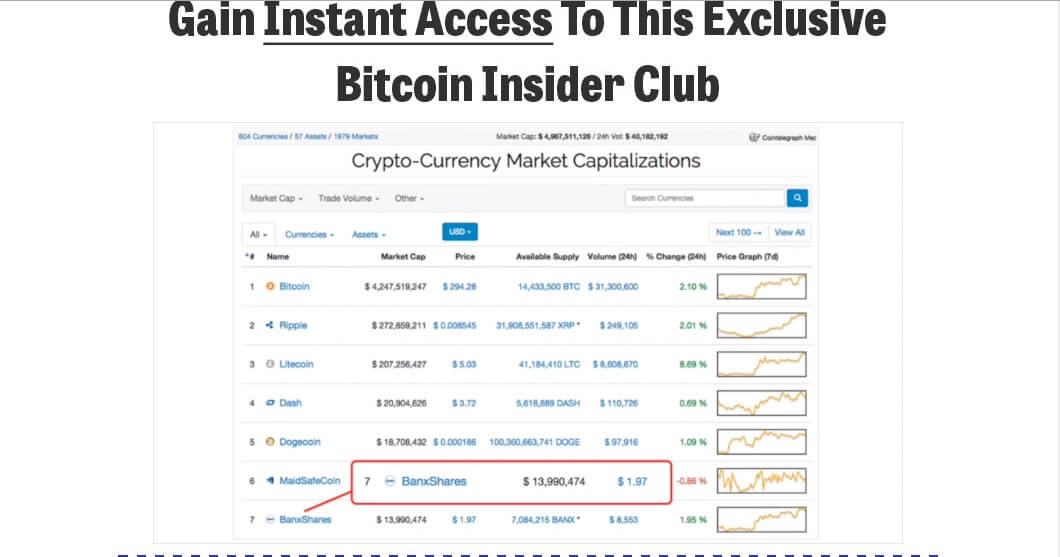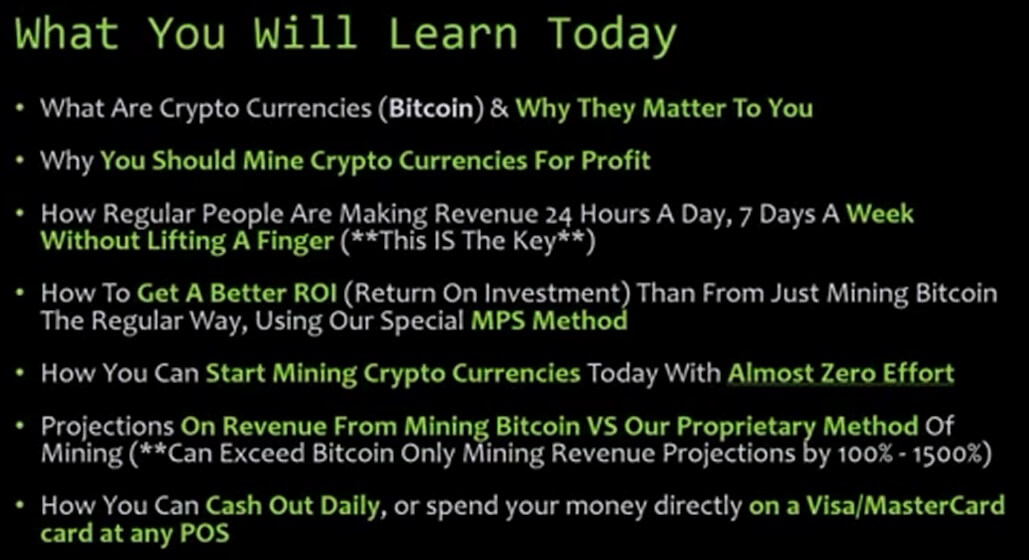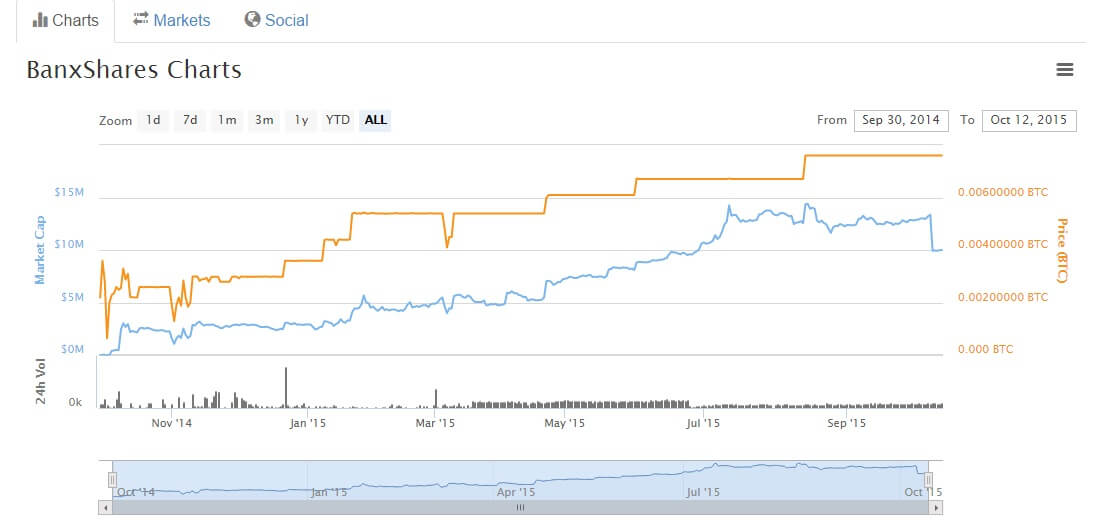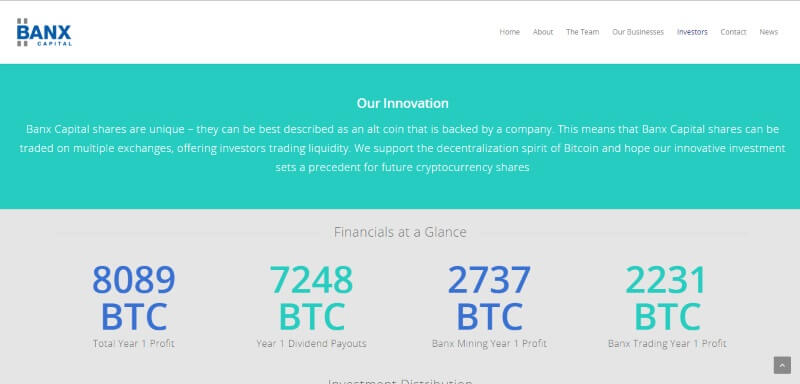
BanxShare’s marketcap is artificially pumped, with the vast majority of its 24 hour volume coming way of off market trades from “private” investors that cannot be verified and an enforced floor price that makes selling the altcoin all but impossible. Because of this, the coin is expected to be removed from Coinmarketcap tomorrow, October 13th. Worse, BanxShares offer a monthly payout based on Banx Capital’s profits, but where those profits are coming from remain unclear, leading to Ponzi scheme accusations on the bitcointalk forum.
BanxShares made some news when it jumped up the coinmarketcap rankings, seemingly out of nowhere. However, the figure is only the total supply times the quoted price. But the quoted price isn’t the actual price, as there are virtually no trades happening on the open market. The 24 hour volume figures are taken from a Banx.io API and aren’t checked against actual market trades. At least 95% of banx.io BANX investment trades are coming way of wire transfer at an undisclosed rate, something creator Mark Lyford admitted to me.
“95% of the income from selling banx happens in wire transfers. so [sic] no there is no significant holding account for BTC.”
For a true price to be found, there has to be people both willing to buy and willing to sell the coin. There are plenty of people willing to sell at the price floor but since no one is willing to buy at that price, the market is clearly stating that BanxShares are over priced. Bitshares integration, if it happens at all, won’t be ready until the end of the year, but is expected to fix this problem because price floors cannot be enforced on BitShares decentralized market. However, that leaves the inflated marketcap available until the end of the year.
I spoke to “Gliss” of Coinmarketcap to get his take on things. He stated that Lyford told him Bitshares integration would happen at Bitshares launch later this week. After I told him that Lyford told me it wouldn’t be ready until the end of the year, he stated he had to talk to Lyford. When following up with him today he gave me this statement:
“Yes, starting tomorrow ICO coins (e.g. BanxShares) will not be eligible for market cap ranking.”
BanxShares are described on its website “as an alt coin that is backed by a company.” and promises dividends to all investors gathered from all the companies that fall under the Banx Capital umbrella. Mark Lyford was able to show me screen shots of his company’s profits, overwhelmingly from JVZoo, an affiliate and digital goods selling platform. This seems to indicate that the majority of Banx Capital’s income is related to digital and not physical goods.
I spoke to one of the private investors who told us that he is not happy with their investment, stating that it wasn’t as promised, he had been lied to about when he would be able to sell his investment and he was told that the date he could sell would be pushed back from February 2016 to June 2016, despite creator Mark Lyford telling me that it would be ready by the end of the year or February 2016 at the latest. He also never received the promised mining returns and has been virtually forced to turn his investment into BanxShares, which are not likely to hold their price when he is able to sell. For compensation, he was offered more BanxShares.
I asked Lyford several times where Banx Capital’s income was coming from, to the point that he started to express frustration, but there was an important reason I asked multiple times: Every time he told me something different. The first time I asked, Lyford pointed to BanxMint and Banx Platinum as the primary sources of income. Another time, it was trading activities and mining, and yet another it was Banx.io fees.
Eventually, after showing me JVZoo, he said the company’s income was from educational videos, affiliate selling of software and webinars. That fits into exactly what Banx Platinum claims to be.
Banx Platinum is a USD $297 monthly subscription that nets investors some sit down time with Lyford, one webinar a month, their “trading experts’” emailed advice and not insignificantly, 170 Banx per month. Considering that Mark, and by proxy coinmarketcap, claims each Banx is worth $1.87, this would seem like a major boon to any potential investors. They use the price of Banx to claim that Banx Platinum is actually paying the customer to join their class. This would be a significant bonus if Banx’s price was real and if investors could actually sell it. The investors do, according to Lyford and the video, agree to a 12 month hold, but if and when that market opens up, there is no evidence that the price will hold and significant evidence that it will not. If the price was sustainable, there would be people buying on the open market at today’s price.
The video also claims to be releasing the “world’s first” Bitcoin debit card, a claim that is made hard to take seriously with several options already available. When I asked Lyford about this, he seemed to be unaware of Xapo, the biggest company in the space. But BanxPlatinum is not the limit of Mark Lyford’s marketing funnel, as he calls it. He is also connected to Lottoshares and has been actively promoting the alleged physical lottery with an alt-coin experiment. He and his business partner Michael Taggard from Remittio, a company with no history or products, was founded by Lyford and claimed a “partnership” with Banx days after its inception, have been pushing LottoShares in webinars to investors without cryptocurrency experience. I am currently looking into the validity of LottoShares. (Lyford sent us these images the community can look into here.) The Remittio press release, linked above, makes no mention that Mark Lyford owned half of Remittio from its inception (in fact, he filed the paperwork) or that Remittio had been created just days before. Neither Lyford nor Taggard found this misleading.
In addition, they ran a cloud mining company that promised entirely impossible rates of return on mining by pushing multi-pool mining as a new method they had invented. Multipools have been around for at least a year longer than the pitch video and while their specific algorithm may be proprietary, their claimed ROI of 100 – 1500% higher than regular bitcoin mining is completely unrealistic from what I’ve been told by experienced multi-pool miners. Their video pointed to ZetaCoin and PayCoin as two examples of coins that were more profitable than Bitcoin. ZetaCoin would have only given the numbers they provided if one were to use the price/difficulty ratio when the coin first appeared on exchanges. It quickly both dropped in price and raised in difficulty, making the stated ROI impossible. Like the Banx Platinum video, it also stated that it would have debits and credit cards, something that never came to fruition.
In addition, the service asked for a USD $500 security deposit, an unusual practice for cloud mining companies. While Lyford has informed me that they have stopped mining, the purchase page still exists and the promotional video remained up until I confronted him about its inaccuracies. While it has now been set to private on YouTube, I have downloaded a copy of it. It, like the Banx Platinum video, promises huge returns with virtually no work.
Lyford never produced any proof of the hardware they allegedly had, supposedly able to accommodate contracts for over a million dollars (and able to get it running in less than five business days). The only thing he presented to me when asked to show evidence of mining was this address, 19nrwuF7EHCSrrCu8QAJ1jbHheNfU3164P. That it showed no signs of mining is significant, but could be partially explained away since they claim to be operating a multipool. More damning is the fact that the wallet had not received a single transaction until May of this year, three months after Lyford told me they stopped accepting mining contracts. Also worth noting, only a bit over 28 BTC ever passed through that address.
I asked how he could possibly have hoped to cover those kind of contracts, and he stated that he had a deal with Spondoolies to get SP31s when they were being made. They claimed to be able to handle contracts worth over 100TH/s, which would required at least eighteen SP31s to be shipped, installed and mining within five business days. We are working on getting comment from Spondoolies to see if they ever had a deal with Lyford and will update this space as necessary.
When the group told investors they were going to stop mining, Banx was pushed as the alternative meant to make investors whole, according to both Lyford and our dissatisfied investor. However, at least the investor I talked to was unaware of the centralized nature of Banx, its price controls or how its marketcap is completely fabricated. While the video does mention the 12 month hold, it does not mention that there is a price floor, artificially pumping up the price.
When GAW stopped mining, Josh Garza employed a similar strategy, promising the doomed currency to make up for lost investments. Most if not all of the investors were unable to recoup their losses using Paycoin.
Lyford told us that he makes every private investor of Banx agree to a 12 month or until all shares are sold hold before they can sell. Our dissatisfied investor told us he never signed anything, but was told about the hold. However, that investor told us that he bought a mining contract in February of this year, and was told he would be able to sell his investment back in February 2016. However, he says that he has now been told that he will have to wait until June 2016 to be able to sell his BanxShares. This is especially curious because I was told by Lyford that Bitshares integration (and thus open markets) would happen by the end of this year. He also said to us that he expected the ICO to finally sell out by February, opening the market to every investor regardless of their hold contract or Bitshares integration, but he is apparently telling at least some of the private investors it will take several months longer than that.
When confronted with this information, Lyford stated:
“Tell me who they are, Everyone who buy [sic] normally has a 12 months hold on there [sic] Banx. If you are refering [sic] to people who converted their mining contracts to Banx shares then that may be the case. 95% of people who had mining contracts converted to Banx shares.”
Lyford had never mentioned the June 2015 date until he was confronted with this information, and it doesn’t match up with what he told us earlier, that the markets would be open once Bitshares integration launched at the end of the year, or at the very latest, in February when he expects the remaining shares to be sold. Obviously, as a journalists I am not going to reveal my source.
Banx Capital does have some income coming in. Lyford, unless he is exceptionally skilled at Photoshop, demonstrated that to me. However, where that money is coming from, not whether it exists, determines the legitimacy of a scheme. If BanxShares dividends are being funded by other investors of Banx, that is the textbook definition of a ponzi scheme. If those investments are coming from online classes that offer Banx as a significant bonus, that isn’t much better. And if dissatisfied customers of a cloud mining company that only existed as a webpage are having their previous investments paid out in Banx, the scheme isn’t long for this world.
Lyford points to the fact that Banx is technically a distributed technology. In fact, the Banx Windows wallet does work and does connect to a few peers. However, there is a reason why BanxShares are on no other exchanges besides Banx.io: Lyford has a history with exchanges. For a short time it was being traded on C-CEX and Alcurex. The rest is a case of he said, he said. Lyford claims that someone had put too much hashing power towards their coin and took it over, creating more coins than should have existed and selling them on C-CEX, this caused him to halt mining, and hardfork the coin. Lyford also stated that he told C-CEX that the ICO was going to go on indefinitely. Later, Alcurex stopped supporting Banx as well, Alcurex have not responded to our requests for comment.
Since being put exclusively on Banx.io, BanxShares has been the world’s most successful currency (not just cryptocurrency) if we are to believe the numbers Lyford and Coinmarketcap provide us. Banx’s artificially enforced price has continued to rise regardless of market factors or Bitcoin price. Even when Bitcoin has gone up in price, BanxShares have kept a steady rise with almost no drops, not resembling the “open market” at all, like the promotional videos and the company’s prospectus promised investors.
I talked to C-CEX, who stated that there was nothing wrong with the original wallet. They said Lyford did not state the terms of his ICO and so they ended it after a “reasonable time.” They said he asked them to send “false” marketcap numbers to coinmarketcap, and they refused. Afterwards, they said Lyford changed their wallet and blockchain, and refused to do a “fair swap” with their customers. Lyford claims he gave C-CEX plenty of warning and while he stated he had Skype conversations to prove both that and that he mentioned the original terms, he was never forthcoming with that evidence.
While it should be easy enough to prove either way, neither party has been forthcoming. As a cryptocurrency, there should be the old block chain somewhere, which would show evidence of an excessive amount of coins being created. On the other hand, C-Cex could easily release their volume numbers for BanxShares, but have so far neglected to.
At one point during our conversation, Lyford listed Banx Mint as the the top source of their income. However, if there were a significant number Banx issued physical coins in existence, there would be a number of online reviews and videos by now. Currently there is only one article, by JP Buntinx, on the Banx Capital-owned Digital Money Times website. No other reviews or unboxing videos of the physical coins exist, especially not to the level to make up a significant amount revenue. Mark never showed me any proof of sales or purchases, only giving me an image of a few holograms used for the coin.
The bottom line is this. Banx’s coinmarketcap is completely fabricated and depends entirely on the price floor that no one is buying at, multiplied by the total number of coins, regardless of the fact that no one is buying. Its volume, likewise, is either completely fabricated or based off of private trades at undisclosed prices and are likely packaged with other products like Banx Platinum or previous mining investors being brought over. In fact, few or none of the trades listed in Banx.io trading history seem to have any effect on the order book, with sell walls being unaffected by the supposed 8-10k in trading volume.
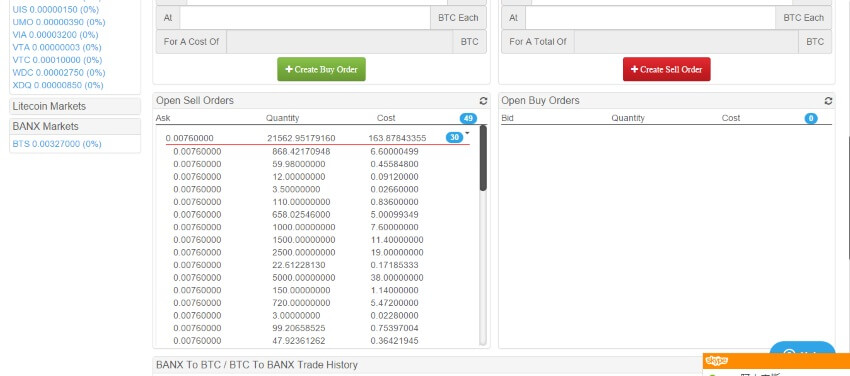
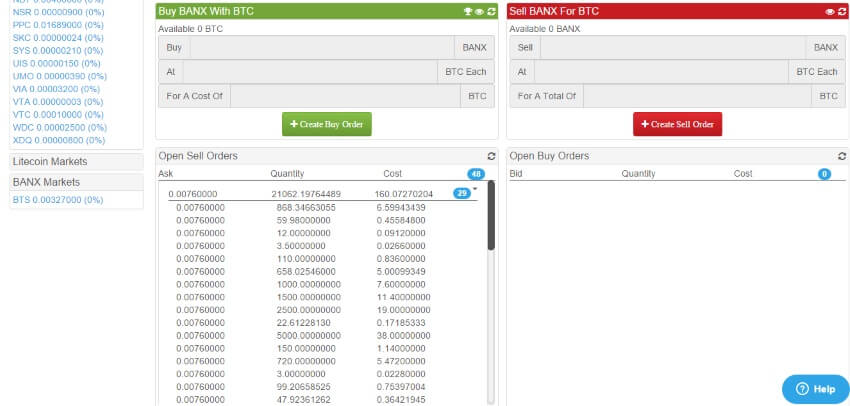
Banx Capital does have some income, but it appears that the majority of it is coming not from Banx services, but from investors who sign up for educational products and webinars that come with a not insignificant amount of Banx as part of the deal.
BanxShares technology itself appears to be a simple copy and paste from foocoin, a template for developers looking to make a copy & paste coin. The Banx source code includes developer notes referencing foocoin, meaning that there appears to be nothing unique about the Banxshares technology.
BanxCapital.com also has some irregularities. It previously posted “financial at a glance” that seemed to indicate BanxCapital’s first year profits (as indicated by “Year 1 Profits”) but Lyford told me that those were projections for after the crowdsale is finished. There was no where on the site that mentioned the word “projections” or any indication that they were as such. However, after our conversation Lyford did add in that they were projections.
Unfortunately, even as projections, they seem completely unrealistic. BitBanx, which plans to make 576BTC profit in the first year, hasn’t even launched a product yet. BanxMint claims an estimated 288 BTC in profit. It would require some combination of 441 physical BTC and 706 physical LTC coins to reach that number, before accounting for manufacturing, materials and shipping costs. Considering their slow start, that also seems unlikely. The site also claims to expect over 2231 BTC from trading activities, but has yet to show any evidence of successful trading accounts.
Banx.io is projected to make over 695 BTC in profit over the next year, presumably in fees. Considering the volume of the exchange today, that seems unlikely. While Lyford admits that they are behind where they expected to be at this point, it is difficult to imagine they would reach those levels. There aren’t any indications that the exchange is growing (quite the opposite) with the only significant volume coming on the BTC/BANX market, and even that volume appears to either be faked or coming from private investors via wire transfer. In fact, when asked how significant the Banx.io fees were in accounting for BanxCapital’s profits, Lyford first insisted that they didn’t have fees for Banx trading at all on Banx.io. When I pointed him to the website’s page that indicated Banx trades were subject to a 0.25% fee, he eventually admitted that there were fees. However, if those fees made up a significant portion of his profits, he likely would have been aware of them.
Worse still, despite taking time to edit in that they were projections, the projections for mining activities remain on the site, despite Lyford admitting that they have halted mining activities. The 2737 BTC profit figure was never realistic, but that it remains up after it was pointed out to him and after he went on the site to edit other things, seems to be a clear and intentional misleading of investors.
As Mark Lyford has stated himself on the forum many times, an investment into Banx is an investment into him. That couldn’t be more true because the majority of the profits seem to be dependent on his ability to bring in more curious investors. They may be buying an educational course but the promise is that they will be able to turn those courses into a significant amount of bitcoin and Banx. Investors are promised unrealistic returns on Bitcoin and are misled about the liquidity and size of the Banx market, and Coinmarketcap’s ranking, soon to be removed, was often pointed to to prove Banx’s value.
Before publishing this article, Lyford accused me of taking money from NXT to publish this article. He grabbed onto an unfounded accusation by infamous bitcoin troll Blue Meanie, who has stated that I took money from NXT to pump the coin. I have never taken any money from NXT and Blue Meanie has never posted any evidence that I have. Nor have I owned any more than $50 worth of NXT. Mark Lyford threatened me with posting Blue Meanie’s troll thread if he did not agree with the tone of my article. The accusations are from months ago, and judging by the bitcoin talk comments, few people took him seriously.
“but like i say it seems like you have your own shit hitting the fan, which if this story is twisted in anyway I will only be too happy to point people too.”
While he stated that it was not a threat, I feel that the intention is clear. It did not prevent me from looking into Mark Lyford further.
Special thanks to the members of Bitcointalk who did much of the early leg work in this expose.
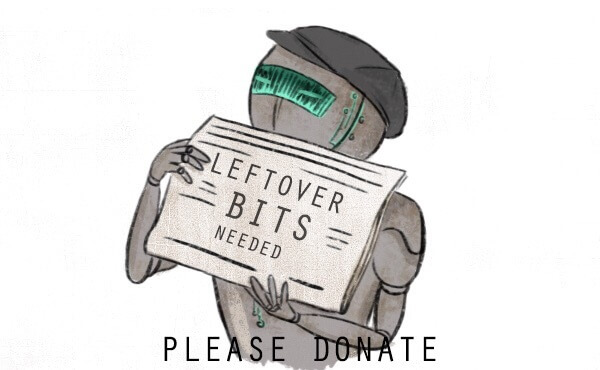
Do you think this article was worth 1 mBTC? It took over a week to research and write. Advertising causes conflicts of interest that could make articles like this impossible. Please help keep CoinJournal ad-free and keep investigative news pieces, like this one, alive. 1 mBTC is worth less than USD 0.25 at today’s prices, and would go a long way in keeping articles like this coming. Please visit our donation page where you can vote on our direction, or use the general QR code below.


